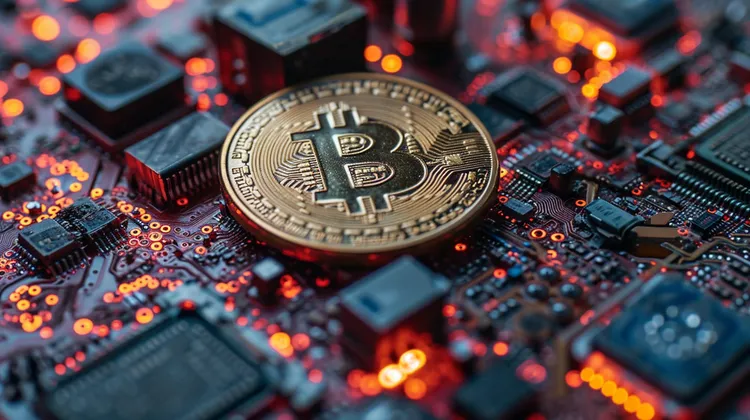In the world of finance, the month of February has been nothing short of wild for treasury bonds. As interest rates continue to rise and investors grapple with inflation concerns, the volatility in this traditionally stable asset class has left many market participants on edge. Amidst all the chaos, the world of cryptocurrencies seems to be moving in slow motion, relatively unaffected by the turmoil in the treasury market.
To understand why cryptocurrencies have been slow going while treasuries experience extreme volatility, it is important to examine the fundamental differences between these two asset classes. Treasury bonds are often seen as safe-haven assets that provide a fixed income stream and are backed by the full faith and credit of the government. They are a reliable instrument for investors seeking stability and consistent returns.
On the other hand, cryptocurrencies, such as Bitcoin and Ethereum, are known for their highly volatile nature. These decentralized digital assets operate on blockchain technology, and their value is determined by the market forces of supply and demand. Unlike treasuries, which are backed by governments, cryptocurrencies derive their value from the trust and belief of their adopters.
Given these inherent differences, it is not surprising that treasuries and cryptocurrencies respond differently to market events. The recent surge in treasury yields and fears of mounting inflation have sent shockwaves through traditional financial markets, causing bond prices to plummet and yields to rise. This heightened uncertainty has made treasuries an unwelcome investment choice for many, as their once-reliable returns are now deemed inadequate in the face of rising inflation expectations.
Cryptocurrencies, on the other hand, operate in a largely separate ecosystem, independent of traditional financial systems. While they have had their fair share of volatility, they have not experienced the same magnitude of price fluctuations as treasuries in recent weeks. Cryptocurrencies are driven by their own unique set of factors, including regulatory developments, technological advancements, and market sentiment. Therefore, they have not been subject to the same immediate pressures as the treasury market.
This is not to say that cryptocurrencies are immune to the effects of rising interest rates and inflation concerns. As the cost of borrowing increases and inflation erodes the purchasing power of fiat currencies, some investors may turn to cryptocurrencies as an alternative store of value. This transition may take time, as cryptocurrencies are still subject to high levels of skepticism and regulatory uncertainty in many jurisdictions. The volatility associated with cryptocurrencies can deter more risk-averse investors, who favor the stability offered by treasuries even in times of turmoil.
It is worth noting that while cryptocurrencies may not be directly affected by treasury volatility, they are not entirely immune to broader market conditions. In the event of a widespread financial crisis, for example, cryptocurrencies could experience a sell-off as investors flock to more liquid and established assets. An increase in interest rates could lead to a tightening of credit conditions, which may indirectly impact the growth and adoption of cryptocurrencies.
The recent volatility in the treasury market has had limited impact on the world of cryptocurrencies. While treasuries suffer from rising yields and inflation concerns, cryptocurrencies continue to operate relatively unscathed. This divergence can largely be attributed to the fundamental differences between these two asset classes. Cryptocurrencies operate within their own ecosystem, driven by unique factors, while treasuries are subject to the dynamics of traditional financial markets. While cryptocurrencies may not be entirely shielded from broader market conditions, their slower response to the wild month for treasuries reflects the distinctive nature and characteristics of this emerging asset class.




It’s interesting to see that cryptocurrencies could potentially be seen as an alternative store of value during times of inflation. The transition might take time, but it’s something to keep an eye on!
This article makes a lot of sense! Cryptocurrencies and treasuries have their own separate ecosystems, which explains why they respond differently to market events.
This article conveniently ignores the fact that cryptocurrencies are speculative assets with no intrinsic value. They are bound to crash sooner or later.
I never realized that cryptocurrencies and treasuries were so fundamentally different. This article gave me a better understanding of how they operate in the market.
Wow, another article trying to downplay the risks of cryptocurrencies. It’s just a matter of time before they crash and burn.
I wouldn’t touch cryptocurrencies with a ten-foot pole. They’re just a breeding ground for scams and fraud. Stick with treasuries, folks.
I never thought about the potential impact of a widespread financial crisis on cryptocurrencies. It’s a reminder that they’re not completely detached from broader market conditions.
It’s ridiculous how cryptocurrencies are getting a free pass while treasuries are facing extreme volatility. It’s time for reality to hit the crypto market.
As someone who’s interested in investing, it’s great to learn about the unique factors that drive cryptocurrencies. It’s a whole new world compared to treasury bonds!
Cryptocurrencies are like playing with fire. Stick to treasuries if you want real stability and consistent returns.
Cryptocurrencies are a joke. No backing, no stability, just a bunch of hype. Give me treasuries any day for real returns.
Cryptocurrencies are nothing more than a speculative frenzy. Don’t be fooled by their supposed resilience. It’s just a matter of time before they crumble.